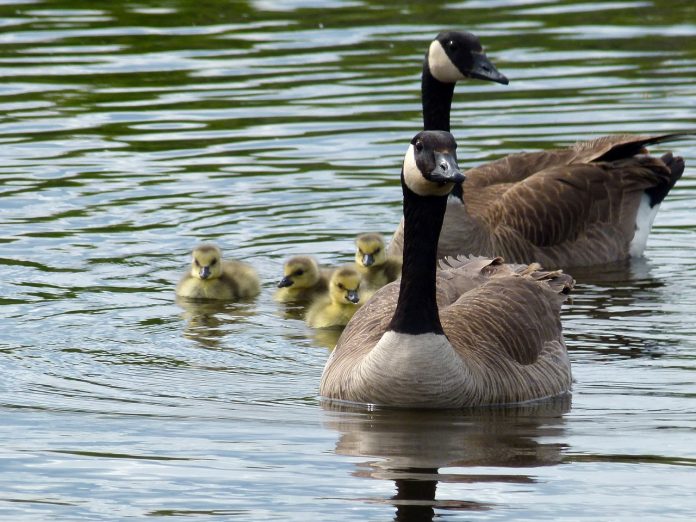Restoration of the Canada Goose began in the 1950s in North and South Dakota. Once driven to the point of extirpation, geese have since established a resident population of more than three million in the United States and over four million in North America.
These birds offer excellent hunting opportunities and great table fare, but we have seen a considerable negative impact on water quality in ponds nationwide that can be largely attributed to geese. Besides water quality, manure-covered sidewalks and landscaping can really hinder a nice outdoor experience, and aggressive geese can pose a risk to children and pets.
Water quality
On average, a single goose will produce 1.75 pounds of manure every day. This manure is high in nutrients that stimulate algal blooms which, when they die off, deplete oxygen, causing fish kills and other negative effects. Certain cyanobacteria that, when established, can produce several toxins known as cyanotoxins, can tolerate these degraded conditions.
These toxins are highly variable, including but not limited to neurotoxins and cyclic peptide toxins that attack the nervous and gastrointestinal systems of humans and animals.
This massive amount of goose manure poses another health risk due to the pathogenic E. coli and other fecal coliforms that geese harbor. Managing the number of geese in an area is the first step in improving water quality and the aesthetics of a pond, as well as preventing manure-laden landscaping.
Goose management
Timing scare tactics and deterrents right is essential for getting geese to leave the area. February through March is the most important time of year to employ scare tactics and other deterrents in your management.
This is when migratory geese have broken away from the flock and are preparing for nesting. Different scare tactics need to be rotated around the clock and throughout the week to prevent geese from getting used to one specific form of harassment.
Some of these techniques include chasing, fencing and visual or audial deterrents. A typical recommendation is to cease mowing vegetation right next to the water and let it grow up. The tall vegetation deters geese from moving on to the bank because a predator may be hiding there.
For more immediate exclusion, options include physical barriers like snow fence or a two-strand wire goose fence on light duty T-posts. Landowners may also take advantage of goose exclusion by establishing native wetland vegetation around the pond that can greatly improve the aesthetics of the property while deterring geese at the same time.
Next, you can use harassment techniques. A common method is to use a starter pistol that launches pyrotechnics, which either explode in the air or produce a loud shrill. These are commonly referred to as “Bangers and Screamers” and can be very effective at causing geese to leave the area, especially when you use them in a rotational and unpredictable way.
At night, high-powered lasers can cause roosting geese to leave the area. Hanging mylar tape and flagging can be visual deterrents as well.
All this equipment can be purchased from nuisance wildlife supply vendors. If you do not want to purchase special equipment, chasing the geese or using a trained dog can also be very effective.
Harassment
With all these methods, it is critical to harass geese to the point that they fly away. Simply making them run away is not enough. Also, stop harassment when they start laying eggs.
Contact your district office and discuss options for nesting or addling permits. Applicants may be eligible for a permit only if prior harassment has taken place and is documented.
If hunting over the winter is feasible and legal at your location, it is always encouraged. Remember that the harassment you perform in February and March will determine the amount of goose-related problems you experience for the rest of the summer.














I like how you said that the best time to work on making geese leave an area is most effective in February and March for determining how many problems you might have during the summer. My uncle has some property in the wilderness near a huge lake. He is constantly bombarded with goose problems. If he is not aware of this timing, we will let him know.
thank you for the article